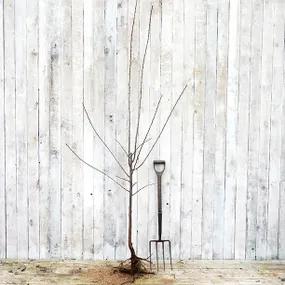Belle de Louvain Plum Trees
Honest Delivery Prices- Cooking & Jam.
- Self Fertile
- Crops in August
- Pollination Group C
Recommended extras
Description
Prunus Belle de Louvain
Description of Belle de Louvain Plum Trees & Fruit:
This old cooking plum is highly recommended for exposed, cold or shady sites, where it will reliably make big crops, early in the season. If you want to make plum jam, pies or other cooked plum delicacies in poor conditions, this is the tree for you. It takes a little longer than most plums to reach maturity and begin to bear fruit, which is a good thing if your site isn't great because your tree will naturally spend longer putting down roots and developing its branches.
The fruit can be eaten fresh, but the texture is a bit dry and the flavour is weak.
Browse our range of plum trees or see the variety of fruit trees.
Characteristics of Belle de Louvain Trees:
- Self fertile.
- Cooking & Jam.
- Crops in mid-August.
- Pollination group C.
Growing Belle de Louvain Plum Trees:
Rich soil always helps - dig in plenty of good manure and compost before planting.
Soil drainage must be good.
The more sun your trees get the better your crops will be, but this tree can cope with half a day of shade.
Belle de Louvain Rootstocks:
Please note that all our Belle de Louvain trees are on St Julien A rootstocks unless otherwise described.
Pollination Partners for Belle de Louvain:
Your trees are Self fertile, so a pollination partner isn't necessary. They are in pollination group C, which means that they will cross pollinate with trees in groups B, C and D of our plum tree pollination table.
History & Parentage of Belle de Louvain:
This tree was discovered in 1845, growing in a famous old orchard belonging to the Belgian scientist Jean-Baptiste Van Mons.

 1.webp)
 1.webp)
 2.webp)

